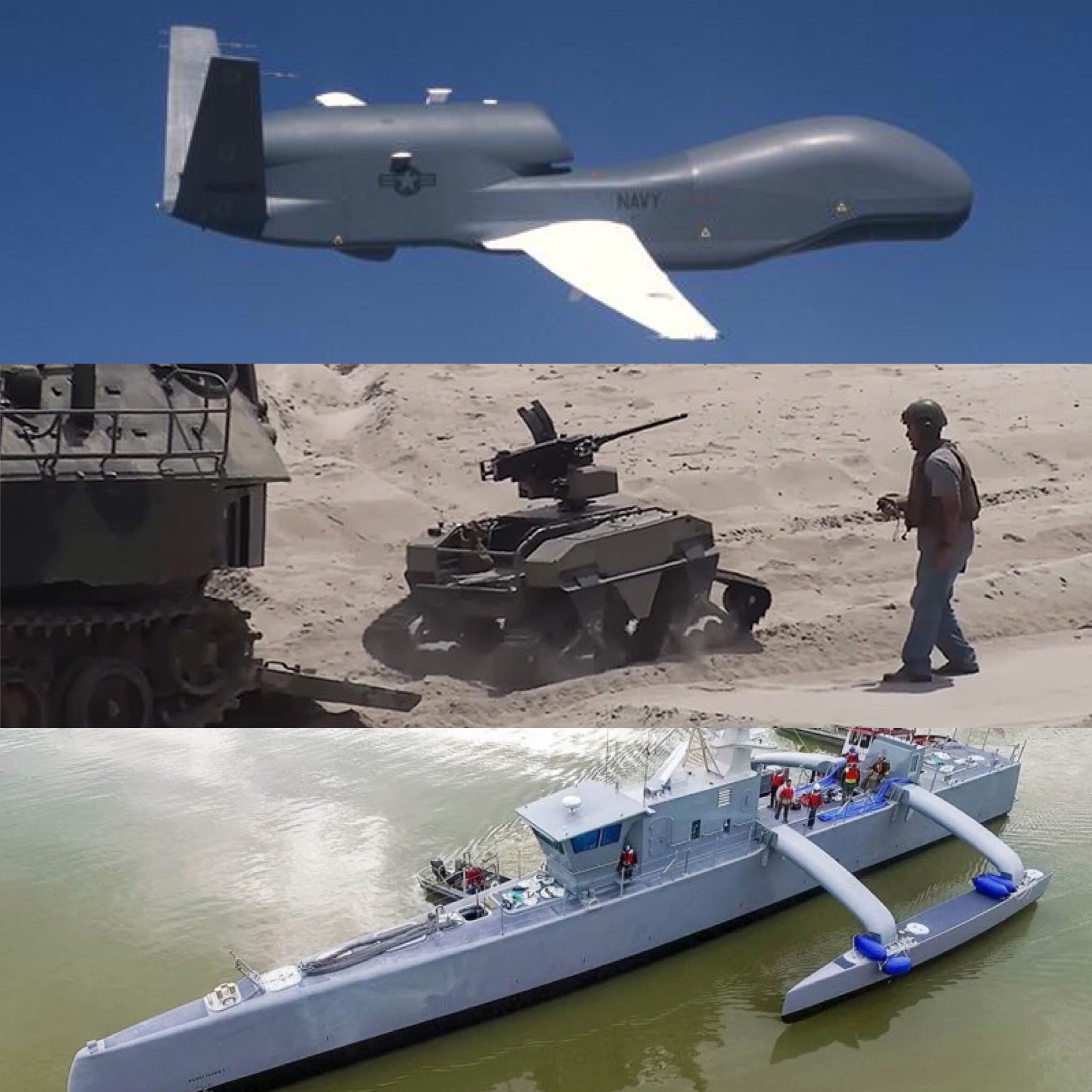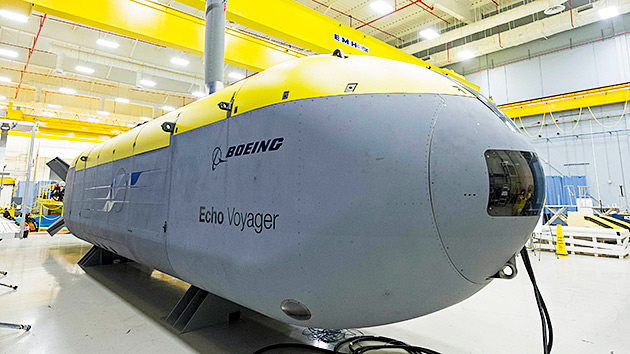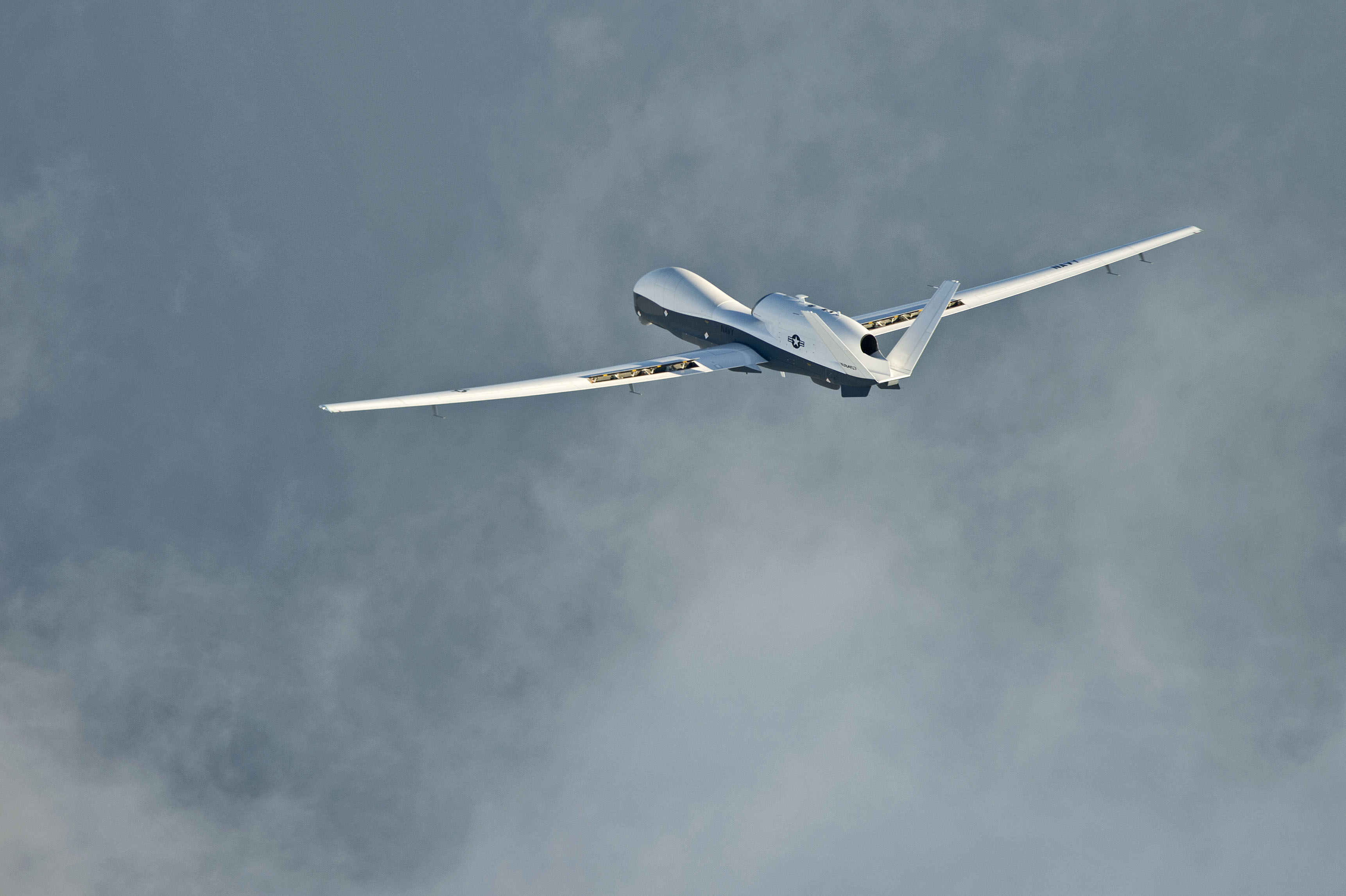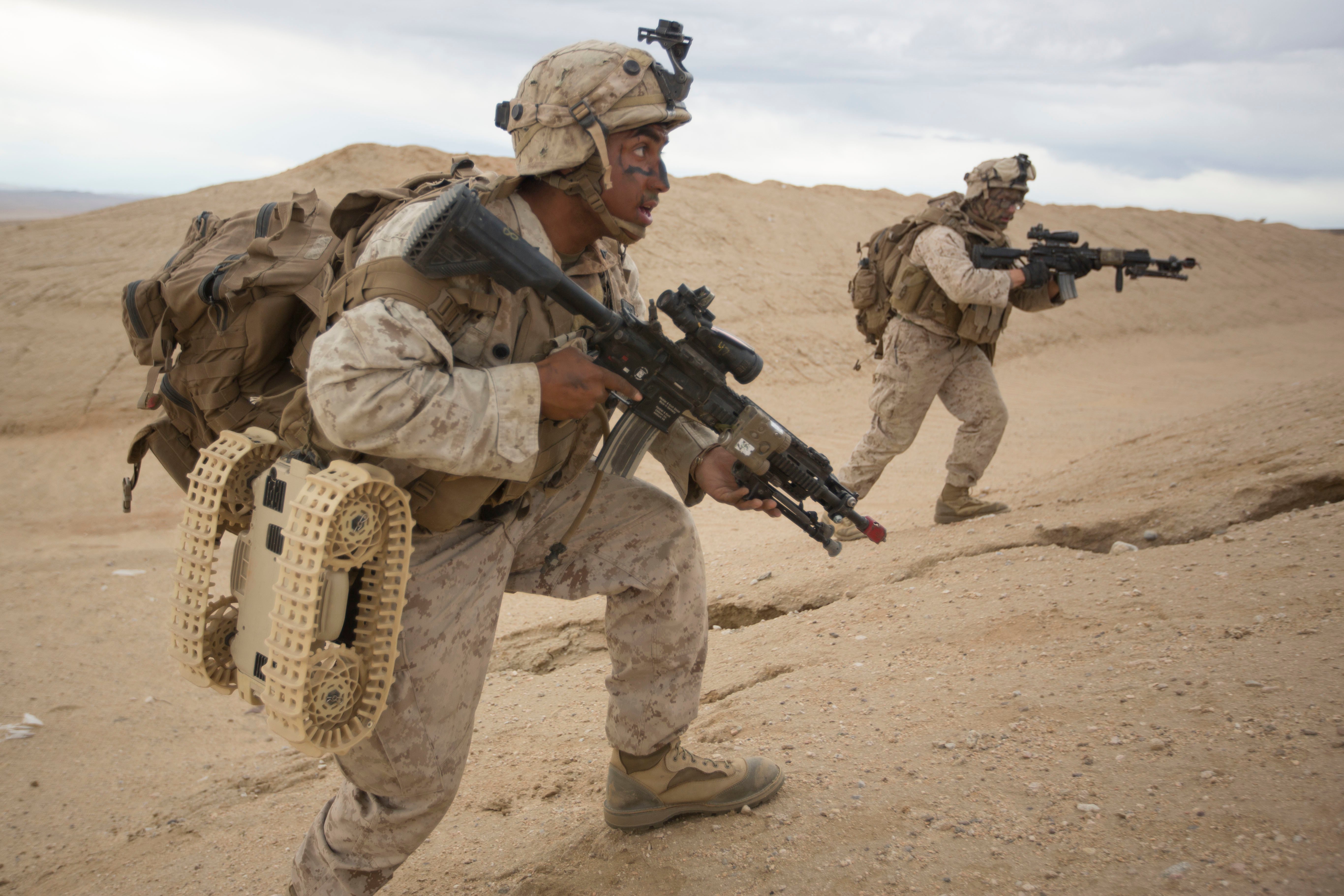
Navy BAMS-D UAV forward deployed to the Middle East, Marine Multi-Utility Tactical Transports (MUTTs), Navy SeaHunter Unmanned Surface Vehicle
The Navy hopes to eventually make unmanned systems just one tool among many for commanders to pick from. However, to get to that point the service will have to get unmanned systems into the hands of warfighters to work out the kinks, leaders said.
Chief of Naval Research Rear Adm. David Hahn compared naval warfare to a golf tournament: each operator gets a set of tools; faces not only competition with adversaries but also environmental challenges; and needs to perform well over and over again to win over a course of days.
“Are we ready to put [unmanned systems in] as one of the 14 clubs in the bag?” Hahn said to the audience at an unmanned systems panel.
“Have we provided for the operator the same grip on this new club that they’ve got on the ones already in the bags and they know how to use them, or are we going to provide a left-handed club? He’s a right-handed player, that’s not going to be useful. Are we going to ask them to alter their swing mechanics in a way that’s not going to be effective for them? If so, that tool will sit there in the bag and never be used. That’s not a useful thing for us to trade out on our ships or on our expeditionary forces to provide for our operators.”
Despite hurdles the Navy and Marine Corps still face in integrated unmanned aerial, surface, underwater and ground systems into their operations, Hahn said the time is right to put more systems into operators’ hands to work through the remaining challenges.
“I think there is a place in the bag to trade out one of those 14 clubs I’m carrying today and start putting unmanned things in there in a more robust manner,” he said.
As an example, Hahn said the naval research community deployed a large unmanned underwater vehicle to the Western Pacific to see how difficult it would be to get the system into theater, along with the requisite logistics and personnel, to conduct a mission.
“I will tell you, it’s tremendous. It’s not a simple task, and there’s some discovery along the way about moving these things that are on the cutting edge of technology, for doing a job that today I can do with a manned platform or manned set of tools. Things that you wouldn’t think about until you go do it. Can I take lithium-ion batteries on a plane? Can I airlift them? If I do, what’s the condition they have to be in?” Hahn said.

Echo Voyager is the newest member to join Boeing’s unmanned undersea vehicle family. The 51-foot vehicle is designed to stay underwater for months at a time. Boeing photo.
Similarly, the Office of Naval Research is also working with the SeaHunter Medium Displacement Unmanned Surface Vehicle (MDUSV) to integrate its capabilities into routine fleet operations, “because only if we can get that club in the bag with the operators who need to use it, are they going to be given the chance to figure out how it integrates into the naval power calculus that a strike group thinks through.”
The operations taking place in and around San Diego are meant to look at not only how to use the SeaHunter but also how to optimize its use within broader fleet operations planning, as well as understand what the USV’s limitations are.
During the same panel discussion, Rear Adm. Mark Darrah, the Program Executive Officer for Unmanned Aviation and Strike Weapons, said within the unmanned aviation world there are also some policy and training issues he’s still working through.
“There is an aviation culture that we have to manage where we had, early on, people trying to apply the 3710 NATOPS approach of who’s going to fly these things, do they have to be aeromedically qualified to fly a drone, and so on and so forth,” Darrah said.
“I know we have lance corporals in the field with iPads and so on that are flying these things in the airspace, and so there have been some adjustments to how we think about what’s required for training and so on and so forth. I know the Marine Corps is

The MQ-4C Triton unmanned aircraft system completes its inaugural cross-country ferry flight at Naval Air Station Patuxent River, Md. Triton took off from the Northrop Grumman Palmdale, Calif. facility Sept. 17, 2014. US Navy Photo
putting out their instruction on how we do that, I know the Navy has done this as well. The Air Boss signed out a document that outlines how are we going to do this unmanned business, when we have so many systems that are out there and we’re going to ask what we call air vehicle operators at a console to fly a system that may be just point and click as opposed to stick and throttle kind of thing. It’s forcing us to think about things a little differently.”
Noting the importance of testing systems in the operating force instead of waiting until the policy and concept of operations and logistics chain have been perfected, Darrah said, “we’ve got to get out there and find these things out, and we are, and that’s the exciting part about producing a new capability.”
Later in the event, speaking to a junior officer who asked a question, Darrah said, “we think we have the policy right, and then when we give it to you, you think of something we didn’t think of. That’s what the junior officers are supposed to do: your job is to take this piece of kit, break it, and tell us why you broke it, so we can get it right and make sure it’s effective for you in the future. We’re in that same place right now with unmanned.”
Brig. Gen. Christian Wortman, commanding general of the Marine Corps Warfighting Lab, said during the panel discussion that the Marine Corps is also working through training, certification and policy issues as it relates to Marines using unmanned aerial systems – especially surrounding the major ongoing initiative of outfitting infantry Marines down to the rifle squad level with small UAS to boost their situational awareness.
“In terms of the logistics considerations, really important things that we’re discovering is power generation, power storage, power management,” he said, calling them “important focus areas for us”
“And then the training and certification of the users: there are some legacy regulations and legacy practices that make a lot of sense in this kind of environment, but if you’re talking about employing a Group 1 UAS at the rifle squad level, 13 of our Marines, do they need to have the whole training and certification process for our manned aviation platforms? We’ve just got to wring that stuff out and make sure it makes sense,” Wortman continued.

United States Marine Corps Lance Cpl Antonio Marin, 3rd Battalion, 5th Marine Regiment, India Company, moves to the side a hill to deploy an unmanned Dragonrider drone in a hostile mountain town in Marine Corps Air Ground Combat Center 29 Palms, Calif. on Oct 23, 2016. USMC Photo
Though the Navy and Marine Corps need to work through these policy, training and logistics issues before unmanned systems can truly be as integrated into fleet operations as are a P-8A Poseidon maritime surveillance manned aircraft, or a team of reconnaissance Marines on a rigid-hull inflatable boat, Hahn said he didn’t want to see the services keeping unmanned systems separate in any way – the integration process needs to start now and continue so that they are always viewed as a tool in the toolkit rather than a separate item that separate operators use for separate missions.
“I don’t think we can view this whole part of the toolset as unique or different. It’s just another club, and if we get the whole team out on the practice range, out on the driving range, and we can get them to exercise these things enough, we’re going to figure out that the more we can turn this into a tool that they’re comfortable using and turn it into something they know, the more utility it will have,” he said.
“So I don’t think there’s an angle here where we need to set up a special set of thinking or a set of disciplines that only deal with unmanned stuff. This is about that competition in an arena we understand very well; we know the field; we know what works and doesn’t work in that environment; and now we’re just bringing a club in that’s got a graphite shaft and a lightweight head, and boy it’s really powerful if we can use it properly, but if the team doesn’t understand how to use it then it’ll just sit in the bag. So the more we can get the team with these clubs on the driving range, the more comfortable they’ll be, the more they’ll understand how to use them.”
Measure
Measure